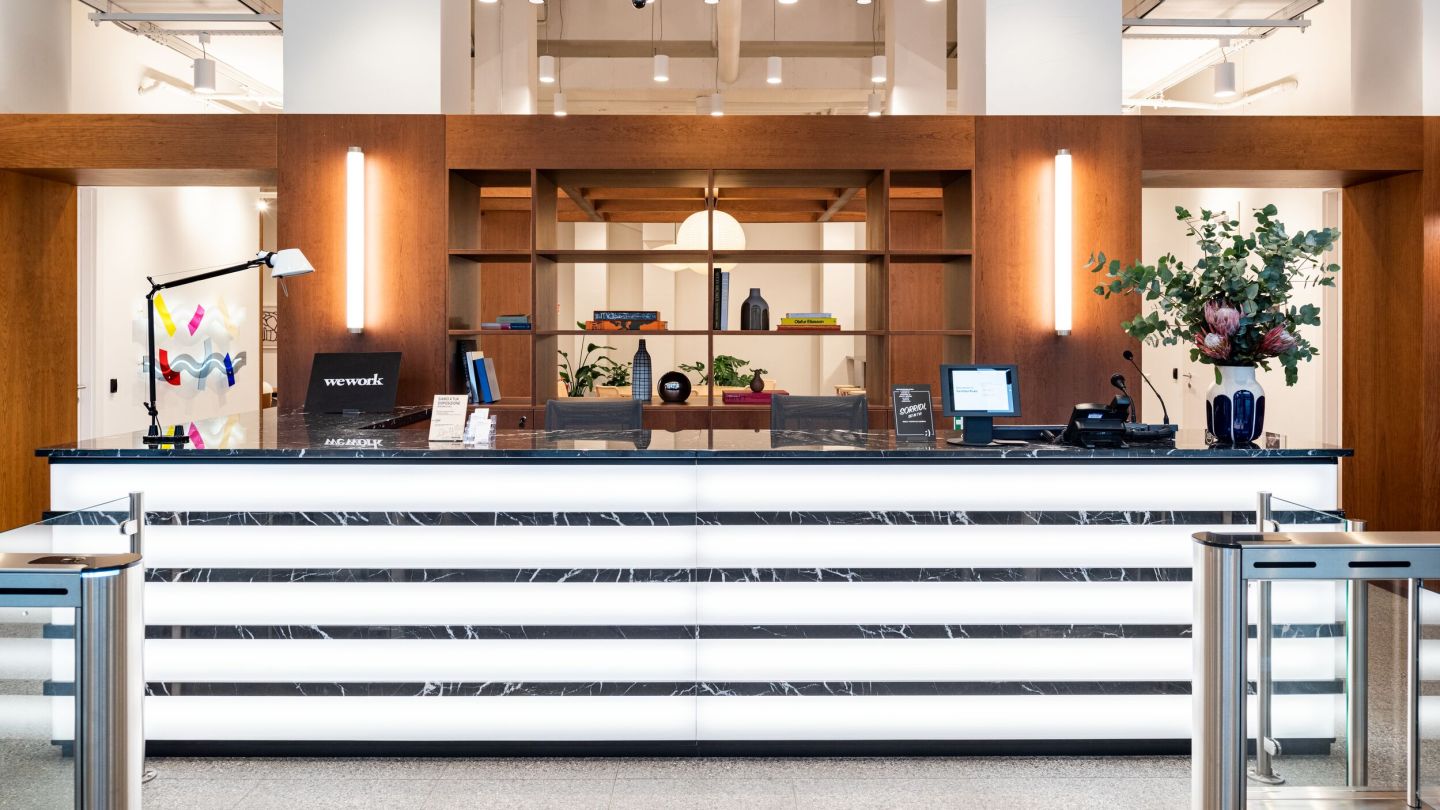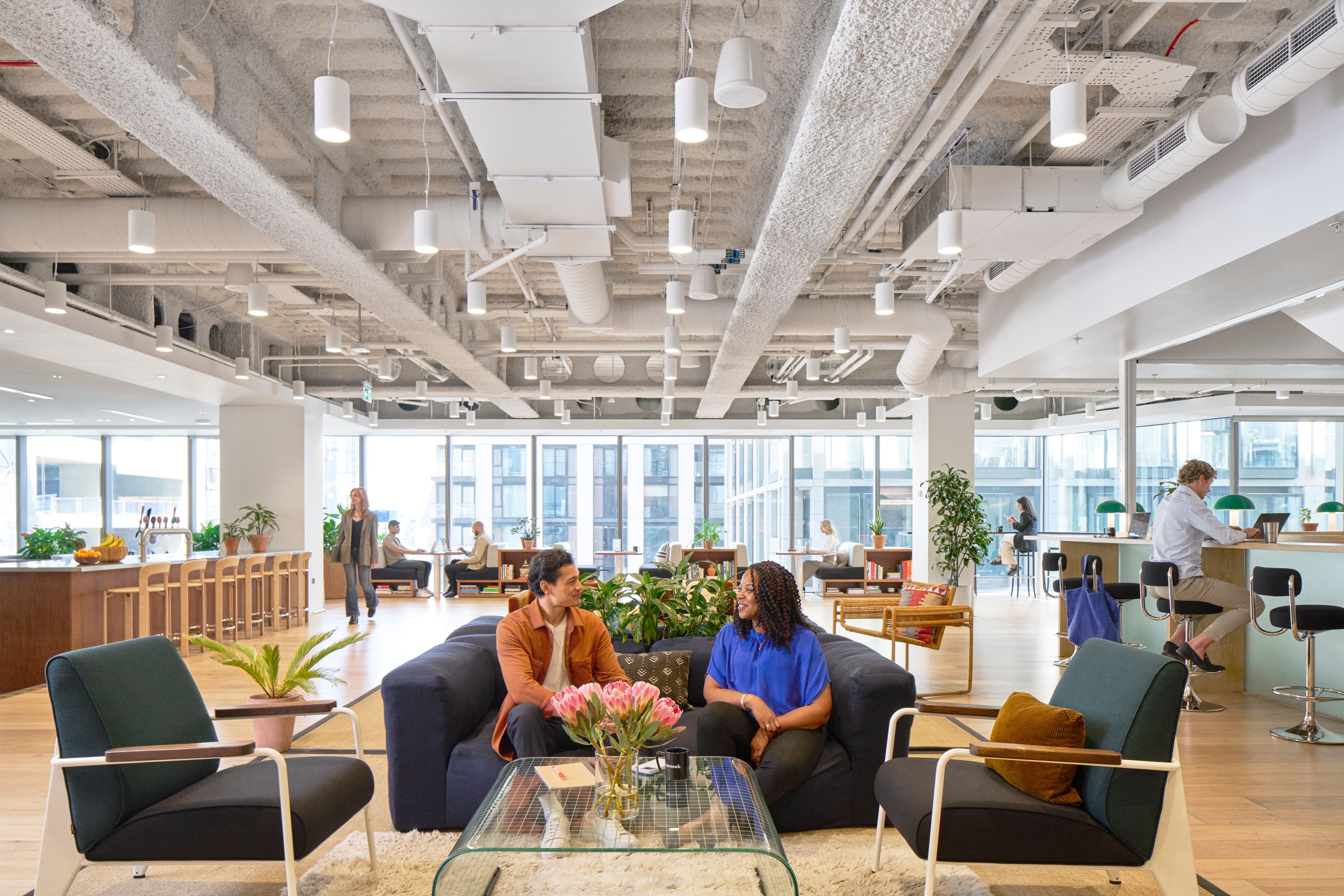With as many as a quarter of all jobs in the United States predicted to be permanently remote by the end of 2022, more and more workers are reevaluating their work-life balance. As part of that, a growing contingent is ditching a permanent location altogether. Currently, there are more than 15 million American digital nomads—a number that’s expected to keep growing.
For anyone leaning into their newfound mobility, there’s no better way to take advantage of that freedom than by setting off on a road trip adventure through some of Europe’s greatest cities. A well-placed network of state-of-the-art workspaces with blazing-fast, reliable Wi-Fi and built-in communities of like-minded individuals makes this easier than ever before. With a WeWork All Access membership, you’ll never be far from the workspace amenities you need to get your job done.
Milan
Start your journey in one of Italy’s most important cultural and financial hubs. While Romans sometimes accuse their northern neighbor of being all work and no play, that’s not really true. The Milanese manage to do it all—food, fashion, fun—at a blistering pace. This is one of Italy’s most cosmopolitan cities, and it’s a joy on all counts.

Make WeWork 15 Via Vittor Pisani your home base. Steps from the Stazione Centrale and near the buzzy Porta Nuova, this spot puts you right in the heart of the action. Check out the Parco Biblioteca degli Alberi, which means “library of trees,” a mere 10-minute walk from the coworking space. Not only does this park feature an impressive botanical garden, but it’s also one of the more popular areas for young Milanese to hang out. The nearby Piazza Gae Aulenti puts a contemporary spin on the traditional Italian square. In the evenings, colorful lights illuminate the fountain and the glittering skyscrapers that surround it.
It’s no secret that Italians live to eat. Unlike the more Mediterranean-inflected dishes of southern Italy, Lombardian cuisine is rich with butter and cream. From hearty meat-centric specialties like crispy cotoletta alla Milanese—a veal chop flattened and fried in clarified butter—to sumptuous saffron risotto, dining here is an indulgent affair. After your meal, be sure to stop by Gelato Giusto in Porta Nuova to try made-from-scratch flavors like rosemary with chocolate crumble or cinnamon with black mulberries and caramelized pistachios.
Munich
Munich locals like to playfully refer to the Bavarian capital as Italy’s northernmost city. While Italians might disagree, Munich does have a certain laid-back charm that’s not often associated with most German cities, with easy access to the Alps as well as a slew of glacial lakes and the hiking areas around them.

The roughly five-and-a-half-hour drive from Milan to Munich passes through some truly spectacular scenery, from Lake Como in Lombardy, Italy, to Lugano, in Italian-speaking Switzerland, and up through Lichtenstein. Once you arrive, establish WeWork Oskar-von-Miller Ring 20 as your base. Located steps from Odeonsplatz and Marienplatz, the space couldn’t be more central. At lunch, walk to nearby Viktualienmarkt, an outdoor food market where vendors sell everything from wild game meats to locally foraged mushrooms. Grab a bite at any of the small eateries selling sausages, fish sandwiches, and classic Bavarian fare.
For an afternoon break, walk to Haus der Kunst, a modern and contemporary art museum. After perusing the galleries, grab a cocktail on the outdoor terrace of Goldene Bar, attached to the museum, then head to the Eisbachwelle, a man-made wave where surfers show off their skills year-round.
Paris
At nearly nine hours long, the drive from Munich to Paris makes for either a full day of driving or a series of en-route adventures. Swing through the jewel-box, Germanic-leaning, French city of Strasbourg, or check out the dazzling masonry of Reims Cathedral in its namesake city.

Once you reach the fabled City of Lights, your office-away-from-home is WeWork 33 Rue la Fayette, housed on six floors of a landmark Art Deco building in the 9th arrondissement. This neighborhood is a prime example of Paris’ stunning Belle Epoque architecture. From the Palais Garnier, home to both the Paris Ballet and the Paris Opera, to the Galeries Lafayette, where well-heeled Parisians go for the latest fashions, it’s hard not to be overwhelmed by the ornate grandeur here.
For a glimpse of the younger, hipper side of Paris, however, take a 10-minute stroll to the nearby neighborhood of South Pigalle. Once considered to be a seedy part of town—the infamous Moulin Rouge is here—South Pigalle is now host to a string of on-trend bistros and bars. Amble down the Rue des Martyrs in pursuit of superb coffee and croissants, then poke your nose into the Musée de la Vie Romantique, a quirky museum devoted entirely to the French Romantics and their exploits.
Diana Hubbell has spent more than a decade covering design, art, travel, and culture for publications including The Washington Post, The Guardian, Eater, Condé Nast Traveler, The Independent, VICE, Travel + Leisure, Architectural Digest, Atlas Obscura, and WIRED, among others.
Want to learn more about flexible work?










